Choosing the Right JavaScript Framework For Your Project
6-17-2019Updated 05-06-2020
What are JavaScript Frameworks?
JavaScript (JS) frameworks have evolved over the years and have provided more features and tools for developers to create beautiful, data-driven web applications. JavaScript frameworks define the entire application’s front-end design. One great thing is JavaScript frameworks will call and use the code as programmed, rather than the developer having to call the framework – this improves code quality.
Some popular JavaScript frameworks are Angular, React and Vue which aid in developing highly interactive web applications. These three frameworks are very similar but have unique nuances that distinguish themselves from each other.

- Angular JS - Angular was released by Google in 2010. It represents a full, MVC application framework and toolkit for developers that runs within the browser. Angular is geared towards complex Single Page Applications (SPAs) which load asynchronously. Angular encourages the use of TypeScript which is advanced JavaScript that is compiled down to be run in the browser. Angular requires packaging and command line tooling for proper utilization.

- React JS - React was released by Facebook in 2013. It is not a full application framework, it is more of a library that focuses on building interactive UIs. It uses a custom JSX templating language which is similar to HTML. React is heavily geared around JavaScript modules and functionality; it also requires packaging and command line tooling as Angular does. Facebook and Instagram are currently built using React.

- Vue JS - Vue was released by a man named Evan You in 2014, with the goal to make modern UI development approachable. Vue is similar to React in that they both are more focused on the “view” aspect in MVC, as opposed to Angular that focuses on the full MVC aspect. Vue has two modes and uses an incrementally adaptable architecture that includes official add-ons for building applications. Vue can require packaging and command line tooling.
All three frameworks are great options for developing interactive applications and can achieve the same end goals. Both Angular and React need to be built out from the ground up using JavaScript, while Vue has an option to include a Vue JS file to an existing HTML page which saves time. For example, you can select an element on the page and include the Vue JS file which allows you to utilize their view components; because of this, Vue is arguably the most versatile framework.
Why Use a JavaScript Framework?
There are many different reasons we use JavaScript frameworks when developing web applications:
- JS Frameworks introduce Components and Modularity in JavaScript which outputs clean code
- Frameworks eliminate unnecessary DOM management code, similar to jQuery, so you can focus on creating a view and eliminate extra work
- JS Frameworks decouple the client (browser) from the server which gives you a separate application on the front-end running in JavaScript and HTML, and separate back-end application on the server running .NET or another server-side programming language
- Frameworks allow you to power multiple platforms with one server using a REST API
- Frameworks are great for developing Single Page Web Applications (SPAs) which requires no page reloads and a displays one page view – like you see with Gmail, Google Maps, or Facebook
- JS Frameworks have improved browser compatibility and provide more flexibility with what you can do with JavaScript
Above all, JavaScript frameworks let us develop quickly and efficiently which saves numerous hours on our JavaScript heavy projects.
Is Vue Right For Your Project?

Yes, most likely! Ask yourself the following questions:
- Do you need a highly interactive web application?
- Do you want your users to access content without requiring multiple clicks?
- Do you need to load data asynchronously with formatting capabilities as data changes?
- Does your project require the need to break up your data and associated formatting into specific components to be reused on other parts of your UI?
If you answered yes to any of these questions, Vue may be the best choice for developing your new web application as it is highly interactive and efficient.
Resources For Developing a New Web Application Using Vue
Vue provides official add-ons developed by the Vue team to help expedite development processes. Vue has great documentation that can be referenced throughout the development cycle as needed.
Our team uses some or all of the following resources on our clients’ Vue projects:
- Vue CLI (Command Line Interface) - This provides our team with tools and starter templates for packaging, building, unit testing and deploying Vue applications; Webpack is a popular option to start with.
- Vue Components - We use .vue components which is recommended for building applications with Vue. Utlizing .vue components reduces the need to bind individual index/HTML pages.
- Vue Router - This is the official router for Vue.js which provides tools for mapping Vue components to browser URLs. The Vue Router also includes built-in support for browser history and many other helpful features our team utilizes.
- Vuex State Management - This is the official state management library for Vue which is based on React’s Redux and Flux patterns. This library creates a central data storage system throughout the application instead of individual components loading data directly. This allows multiple components to share the same data and to be aware of changes in the state of that data.
All three JavaScript frameworks are great – it is difficult to determine if one framework is truly superior over others but Vue is growing quickly in popularity. If you need a single page web application developed or need to determine what JavaScript framework is best for your project, schedule a consultation with us and we can help!

